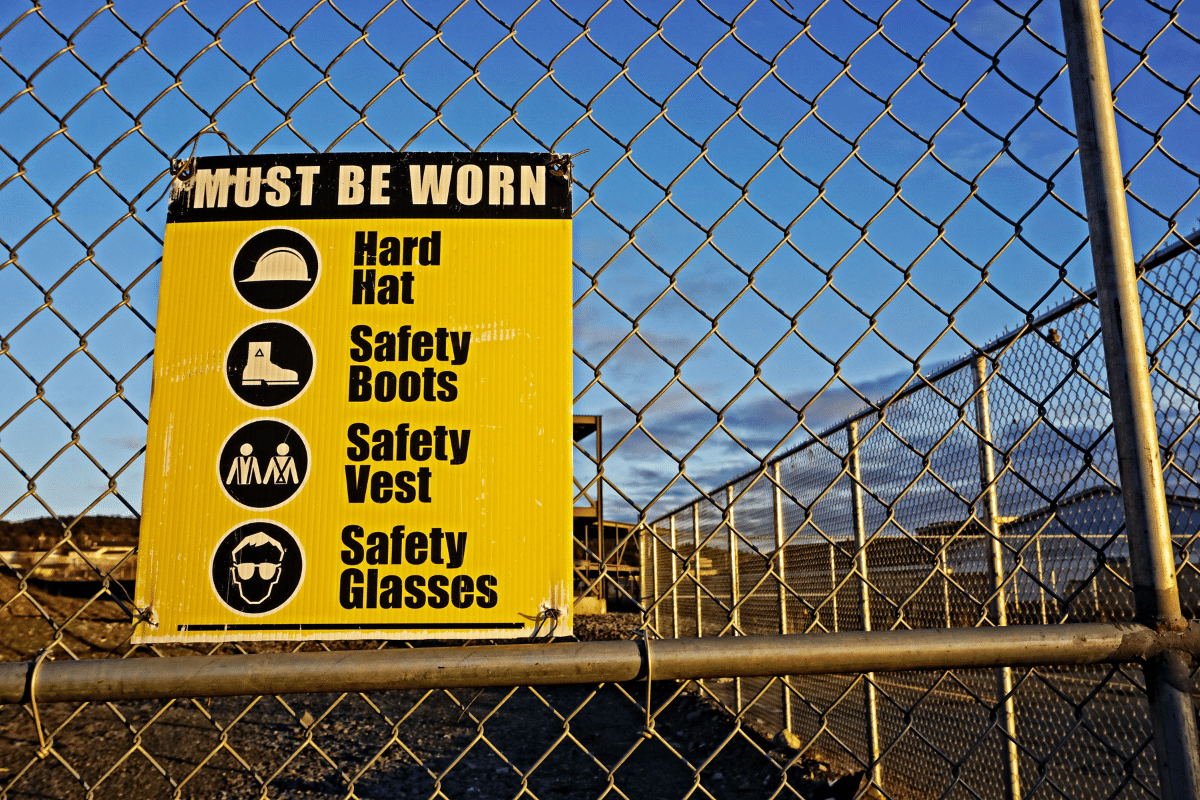March 19, 2014 38 min read
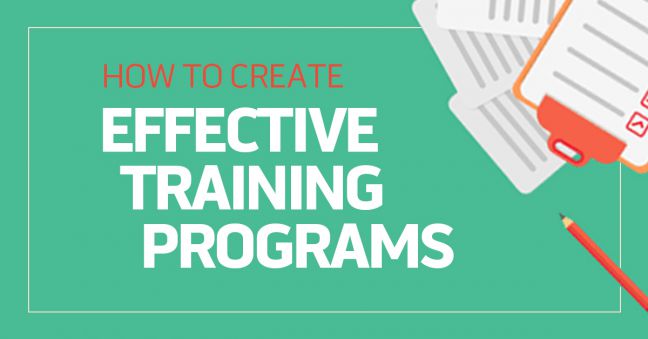
How To Create an Effective Training Program: 8 Steps to Success
Industry:
Solution:

Nearly everyone recognizes the value and benefits of workforce training. When done properly, training can make workers more efficient — increasing production, revenue, and profits while decreasing costs, waste, and inefficiencies. Effective training can lead to increased compliance with regulations. It can even lead to a happier, more satisfied and engaged workforce, which in turn reduces turnover and costly new employee onboarding. So the benefits are many.
But creating effective training isn’t easy. Some common problems include creating training that doesn’t support a true business goal, or that’s intended to solve a problem that training can’t fix, or without first identifying the true purpose of the training, or that includes too much information. Or maybe all of those things.
So, how does one create effective workforce training materials? Below is an eight-step road map to help you create more effective training materials. Entire books have been written about each of these steps, so there’s far more to say than what’s written below. But this article should serve as an effective getting-started guide in your quest to create workforce training materials that actually work.
Beyond that, we’ve added some notes in the conclusion of this blog to get you thinking in a “what’s next?” manner. Because the neat thing about designing, developing, delivering, and evaluating training is that you’ll never know everything and you’ll be best-served by being a lifelong learner yourself.
Step 1: Perform a Training Needs Assessment

Imagine someone at work perceives a problem and thinks a new training program might resolve it. For example, maybe the production manager says that her workers need to be more efficient and create more units of a product. Before anyone rushes off, creates training materials, and conducts the training, it’s a good idea to take a step back and assess the situation.
The first thing you should do is to analyze the performance problem to get a better idea of what’s causing it and to see if training is really the best solution. We’ve explained this in our Analyzing Performance Problems article. Read that article and come right back here when you’re done 🙂
If you’ve analyzed the workplace performance problem and determined that training really is the right solution, then it’s time to start your research for the training. That’s what the training needs assessment is for.
The basic training needs assessment is a four-step process. Those steps are:
- Identify a clear business goal that the training supports
- Determine the tasks the workers need to perform so the company can reach that goal
- Determine the training activities that will help the workers learn to perform the tasks
- Determine the learning characteristics of the workers that will make the training more effective
Sounds simple enough, but let’s break those four steps down a bit more.
Identify the business goal:
Don’t provide training if it’s not clear why you’re doing it, or if it doesn’t directly support a business goal. Business goals include things like increasing revenue and efficiency, decreasing costs and waste, supporting a new product, teaching a new or changed production process, or complying with regulations. For example, a business goal might be to train employees to create a new product.
Determine the tasks workers need to perform:
Once you’ve identified the business goal, ask yourself what your employees have to do if the company is to reach that goal. During this phase, you’ll identify the “performance gap” between what your workers can do now, and what they must be able to do. To keep with our new product example, the workers might need to know what the new product is, how the product is produced, and (most importantly) the tasks the workers must perform on the job to make the product.
Read this article to learn more about how to conduct a job hazard analysis.
Determine the training activities that will help workers learn to perform the tasks:
You’ve identified what the workers need to do, so now you have to identify the training activities that will help them learn to do those tasks. To continue our example, this may include a quick and short explanation of the product, an equally quick and short overview of the production process, and demonstrations mixed with hands-on practice of the tasks they’ll have to perform on the job.
You might find this article on Different Types of Training for Different Types of Learning helpful here.
Determine characteristics of workers that will make the training more effective:
Finally, consider the characteristics of your workers to determine the type of training that will be most effective for them. In a perfect world, you’d cater training to each individual, but that’s not always possible and you may have to consider the average characteristics of the group as a whole. Consider these kind of things: are they more comfortable with computer-based training or instructor-led training; do they like self-guided or self-paced learning, or would they struggle in that environment; are they youngish or older; are there cultural issues that may factor in; do they learn better from reading, listening, or doing; etc. And because it’s hard to create one-size training that fits all, consider training that blends different aspects so you’ve got a better chance of reaching everyone.
You might want to read this article for more about Business Goals, KPIs, and Job Training.
Facilities Maintenance Kick-Start Smart Guide
Download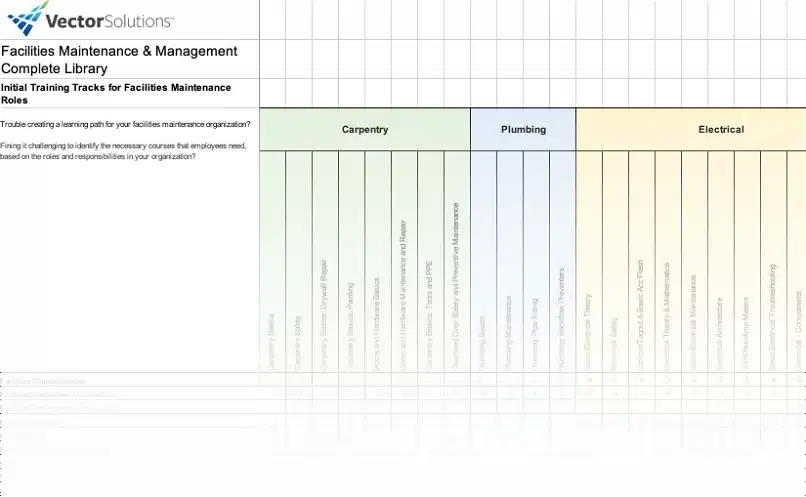
Step 2: Keep Adult Learning Principles in Mind

You could argue this step is already addressed at the end of step 1 or will factor into later steps, and you’d be right. But it’s important enough to call it out on its own.
The workers you want to train are adults, and adults share certain characteristics that that make training more effective for them (or less effective if you ignore the characteristics). If your training recognizes and respects these adult learning principles, it’s likely to be more effective. If your training disregards these principles, you’re throwing training money out the door from the word “go.”
So what are these principles? Adult learners:
- Are self-directed
- Come to training with a lifetime of existing knowledge, experience, and opinions
- Are goal-oriented
- Want training that is relevant
- Want training that is task-oriented
- Learn when they see “what’s in it for them”
- Want to be and feel respected
You can see how these principles relate to the learner characteristics you identified during your training needs assessment. And you can imagine how they should affect your training during design and delivery. Remember the old saying that “you can tune a piano but you can’t tune a fish?” Well, if you ignore adult learning principles, you’ll be trying to tune fish all day long.
If you want to dig a little deeper into this, check out our articles on evidence-based training methods and learning myths.
Blended Learning Solutions Guide
Download Now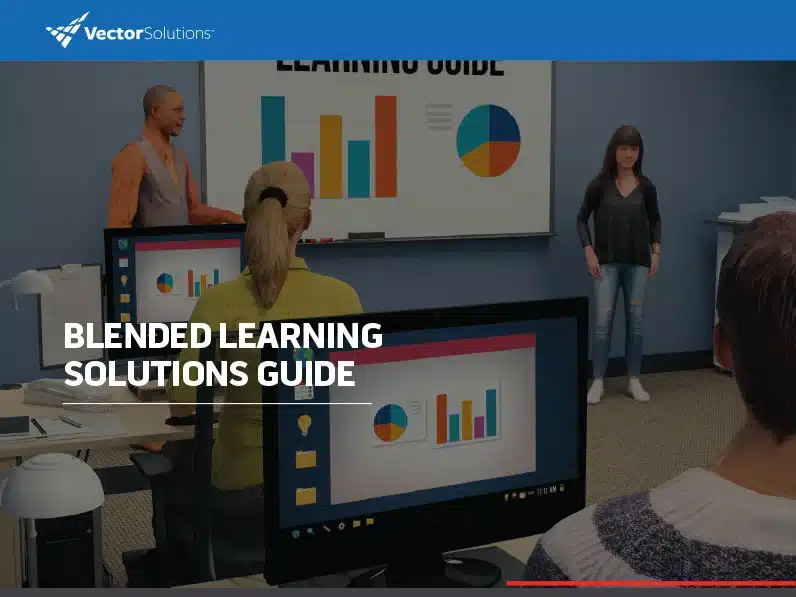
Step 3: Develop Learning Objectives

Before you begin creating any training, it’s critical that you create a list of learning objectives.
Learning objectives are a list of things the workers must be able to do after the training is completed. They are the “North Star” that all aspects of your training should be pointed at. Once you’ve created your learning objectives, create content that covers the objectives—and nothing but. In addition, any quizzes, tests, case studies, or hands-on exercises performed during training to evaluate your worker’s comprehension of the training should assess only the workers’ understanding of the objectives. And finally, any observation of workers when they’re back on the job to evaluate the effectiveness of the training should also focus on the performance of these objectives.
To (intentionally) overstate the point, learning objectives are the end-all and be-all of your training. Without objectives, you’ve got an out-of-control car without a driver.
There’s a lot to be said about learning objectives (and even more to be said); we’ve included a few tips below.
They Can Address Knowledge, Skills, or Attitudes (KSAs):
A learning objective may address things that your learners can “know,” such as how product flows through a machine; skills that your learner’s can perform, such as threading materials into a machine; and attitudes that your employees can hold, such as the importance of threading materials into a machine properly in order to create the best possible product.
Make them SMART:
When you write an objective, it should have five characteristics, known collectively by the acronym SMART. The objective should be specific, meaning it’s very clearly stated and its meaning is equally apparent to everyone. It should be measurable, meaning everyone can agree if the learner satisfies it or not. It should be achievable, meaning the learner truly has a chance to satisfy it. It should be relevant, meaning it’s important for the worker’s job. And it should be time-bound, meaning it will be clear when the learner must be able to satisfy the objective (typically, after training).
You can read more about Writing SMART Learning Objectives here.
Give them four parts (ABCD):
A learning objective should include four parts, which you can remember with the letters ABCD. It should include an actor who will perform the objective (the employees you’re training). It should include a behavior that the actor must perform (this behavior should be stated as a verb that defines the workers’ behavior, such as “recite” or “turn”). It should include conditions under which the employees must perform the behavior (for example, “given a wrench, the employee must…”). And it should include the degree to which the employee must perform the behavior (for example, “90 times an hour”).
You can read more about four-part, ABCD learning objectives here.
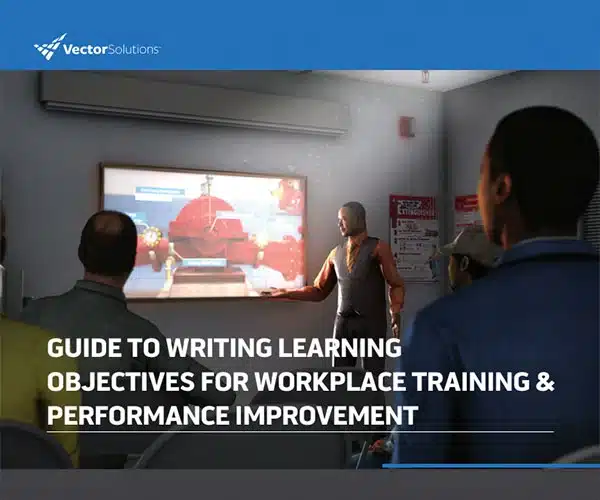
Step 4: Design Training Materials

Designing training materials is like planning a dinner party, coming up with a menu, and writing the recipes. It’s the “plan before you do” phase of training creation.
While you’re designing your materials, keep the following points in mind:
- Remember that it’s important to design before you rush into the next step (development)
- Always focus primarily on the learning needs of your employees, and not on what’s easy for your trainers
- Only create training content and assessments that relate directly to your learning objectives
- Remember the adult learning principles
- Include as much hands-on practice or simulation as possible: people learn by doing
- Whenever possible, put the employees in control of the learning process (instead of the trainer)
- Do everything possible to let the employees talk and interact with the trainer and with each other during the training
- Make sure there’s plenty of opportunity for feedback during training
- Break your training materials up into small “chunks” that are easier to take in and understand
- Order your “chunked” training materials in a logical manner-one step that builds on top of another, or chronologically, etc.
- Try to use a “blended learning” approach that includes training in several different formats (computer-based, instructor-led, etc.).
- Try to integrate storytelling and scenarios into your training
- Try to appeal to a variety of your workers’ senses during training-sight, hearing, touch, smell, and taste (when appropriate and not dangerous). Sight is by far the most important sense for learning, but adding the others when possible does help.
The book Design for How People Learn, by Julie Dirksen, is a great resource for more information about this step.
We’ve also pulled together the following links related to designing effective training materials for you:
- Steps of Creating Training Based on Cognitive Psychology
- Different Types of Training for Different Types of Information
- Matching Types of Information and Graphics in Training
- Blended Learning Guide
- Blended Learning by Feedback Need
- Chunking Your Training Materials
Step 5: Develop Your Training Materials

Once you’ve got your training materials designed, now’s the time to roll up your sleeves and start developing them. It’s like you’ve written a recipe and are ready to cook the meal.
You may create a variety of training materials using several different tools during this step. Here’s a look at a few options:
- Word, Excel, and similar “Office” programs to create handouts for employees and to create training outlines and notes for the instructor of any instructor-led components
- Materials for hands-on elements and/or role-playing elements of the training
- PowerPoint for in-class projections and/or handouts to deliver to employees. Beware of PowerPoint presentations that are nothing but screen after screen of bullet points, however.
- Flip-charts, posters, transparencies, and/or computer-generated graphics for presenting visual materials during training
- E-learning authoring tools such as Articulate Studio and Storyline or Adobe Captivate for creating computer-based e-learning modules
These are just a few ideas, and technology is bringing new possibilities every day, including virtual reality and augmented reality. Be creative and mix and match these to best fit the employees’ training needs. While creating materials, always keep in mind two primary concerns: (1) the things that will help your employees learn most effectively and (2) the learning objectives.
This blog, by Connie Malamed, has lots of great tips on developing training materials.
We’ve also pulled together these articles related to training material development:
- Writing Instructional Materials
- Format Your Written Training Materials for More Effective Learning
- 25 Graphic Design Tips for Training Materials
- How to Make Your Own e-Learning Course
You may also want to consider partnering with a training provider for off-the-shelf or custom training materials.
Step 6: Implement the Training

If designing is like writing a recipe, and developing is like cooking the meal, then this phase is setting the table, ringing the dinner bell, and eating the food.
It may seem obvious, but one of the most critical things you’ll have to do in this phase is inform the employees that will attend the training. Give them plenty of time in advance so that they can work it into their schedules and complete any necessary pre-training preparation.
One thing to keep in mind is that a learning management system (LMS) can play a big role in helping you during this step. An LMS is a software application used assign, deliver, track, and report on training. If you use an LMS at work, it’s easy for your employees to log in and see the list of training they’ve been assigned. Many learning management systems even include notification systems that send emails to the workers when new assignments are made or due dates are approaching. In short, an LMS can automate a lot of the clerical, scheduling, and notification procedures you’d have to do yourself in this step (and they do a lot more than that, too).
In addition, you may also have to do things like inform the workers’ supervisor, reserve rooms for training, buy any necessary supplies, work through any scheduling or traveling logistics, and perhaps even have food and drinks available. Get your ducks in order in advance, so your training goes off as smoothly as possible.
Moving forward to the actual training, the implementation can take a variety of forms. It may be classroom instruction; practice opportunities such as role-playing exercises, focus groups, case studies, or small group assignments; on-the-job skills-based training; the delivery of paper-based hand-outs for individual reading and study; the completion of e-learning modules on a computer; a combination of some or all of these; or more.
If your training includes an on-the-job skills-based component, make sure you know exactly what the employees must do to demonstrate competence. Define this in advance, when you’re creating your learning objectives, and don’t leave it unstated or vague.
If your training includes a classroom instruction component, there are a number of things you can do to make this more productive. Although the key things involve letting the employees be active participants instead of passive and bored listeners, more mundane things like room temperature, lighting, table and chair set-up, visual aids, and the instructor’s presentation style also play a role. There are a number of good books and websites that can you help you with this; the Association for Talent Development (ATD) website is a good place to start looking.
Here are some additional articles related to training delivery and management:
- Using an LMS to Onboard New Employees
- Benefits of Optional, Elective-Based Training
- 70/20/10 and Informal Learning/Performance Support
- Free Learning Management System (LMS) Buyer’s Guide
Download our free LMS Buyer’s Guide Checklist.
Here’s a quick two-minute overview of a learning management system (LMS).
Step 7: Evaluate the Training

It’s easy to provide training to workers, pat yourself on the back, and think you’re done. But if you do, you’ve put your cart before your horse.
If your goal is to deliver effective training that changes your worker’s behavior on the job-and this SHOULD be your goal-then you need to confirm that the training was effective. The standard way to do this is to use Kirkpatrick’s Four Levels of Evaluation.
As you may have guessed, this method involves evaluating the effectiveness of your training at four different levels. Those four evaluations are:
Employees’ reaction to training:
Did the employees like the training? Did they feel like they learned? You can find this out by observing the employees during training, asking their opinions, or handing out surveys. You can hand out paper-based surveys after training if you want, but you may get better results if the survey is online and anonymous. Survey Monkey provides free online tools to help you do this.
Employees’ actual learning:
Assessments during the training should evaluate the employees’ actual learning of the objectives. This might include simple tests for knowledge issues, or case studies, job simulations, or hands-on exercises for skills and attitudes.
- Testing Employees After Training
- How to Write Better Multiple-Choice Questions
- How to Write True/False, Matching, and “Other” Types of Questions
- Testing and Fidelity
- Testing, Reliability, and Validity
Employee’s post-training job behavior:
Are the workers taking the new knowledge/skills/attitudes from training and applying them at work where it counts? Observations of the employees’ on-the-job work behavior will determine this, as will other performance-based metrics.
Quantifiable business results:
Did the training result in reaching the desired business goal (i.e., did revenues rise, did costs decrease, was the new product manufactured properly, or were workplace incidents reduced)?
After you’ve performed these four levels of evaluation, you may determine that the training was as effective as you hoped, or even more. If so, congratulations and job well done. Now you can pat yourself on the back. On the other hand, these evaluations may show that your training wasn’t all you hoped it would be. If so, it’s time to revise the training and get things up to snuff.
- Level 4 Training Evaluations
- Business Goals, KPIs, and Job Training
- How to Measure the Impact of Training on Business Goals
- Big Data and Big Learning Data
Readers with long memories may have read about Kirkpatrick’s Four Levels of Evaluation and felt the familiar tingle of déjà vu. If so, that’s because Kirkpatrick’s four levels map directly to the four steps of the training needs analysis described at the beginning of this article. Check it out for yourself in the table below.
| KIRKPATRICK’S FOUR LEVELS OF EVALUATION | STEPS OF TRAINING NEEDS ASSESSMENT |
|---|---|
| Employees’ reaction | Did the employees like the training? |
| Employees’ learning | Did the employees learn from the training? |
| Employees’ post-training job behavior | Are employees performing desired tasks on the job? |
| Quantifiable business results | Was the business goal reached? |
Readers “in the know” may also know that the classic Kirkpatrick Training Evaluation model has been updated a bit lately. Click to read about the updated New World Kirkpatrick Model from the Kirkpatricks themselves.
If you want to take a deeper dive into issues related to learning and/or training evaluation, check out these two resources:
Step 8: Rinse, Lather, and Repeat Any Step When Necessary

You may have to return to different parts of this 8-step process in the future for a number of reasons. As mentioned above, one would be if your original training proved to be ineffective at any of the four levels. But you may have to do it again if you get new employees or if the work process changes.
But that’s no cause for panic. Now that you know the method, just work your way through. If you made some errors the first time-maybe you misjudged your employee’s learning needs, misidentified the learning objectives, provided too much information during training, put too little information into job aids, or held an instructor-led training that was dominated by the instructor-just go back and do it better the next time.
In addition, don’t forget that one-and-done training sessions often don’t work well (it’s because of how we learn). You should probably consider adding a spaced-practice element to your training programs. For more on this, read the following articles:
- Evidence-Based Training and Spaced Learning
- How to Use Spaced Practice to Support Memory in Job Practice
- How to Beat the Training Forgetting Curve
Conclusion: Effective Training Programs Are Within Reach at Work
So there you have it. Does training have an important role at the workplace? Absolutely. But it can’t solve every problem, and its effectiveness depends on how it’s designed, developed, and implemented. If you follow the eight steps listed above, you’ll find that your training programs will be much more effective, leading to an increased training ROI, happier employees, and the attainment of key business goals.
At the beginning of this article, we mentioned that there’s a LOT more to be said on this topic. For example, while this article presents the steps of training development progressing in a linear, “waterfall” method, training developers today often depart from this for various reasons (for example, see the book Leaving ADDIE for SAM by Michael Allen).
Another interesting way to approach this issue is captured in a model created by Dr. Will Thalheimer that I very much like. He calls it his “training maximizers”.
You’ll also find that sometimes training isn’t the best solution. Instead, there are lots of cases when you would be better off preparing performance support/job aids for workers.
In addition, you’ll also notice that formal training like the stuff we talked about in this article is best considered as part of a “blended learning solution” that also includes and facilitates experiential learning and social learning. Read about that here in our introduction to 70/20/10.
Finally, you may want to check out the following training guides to see a lot of these workplace training best practices in more specific applications:
Anything else we should have added? We haven’t mentioned microlearning, or scenario-based learning, or social learning, or spaced practice, or a variety of other things yet. Please leave a comment below!







